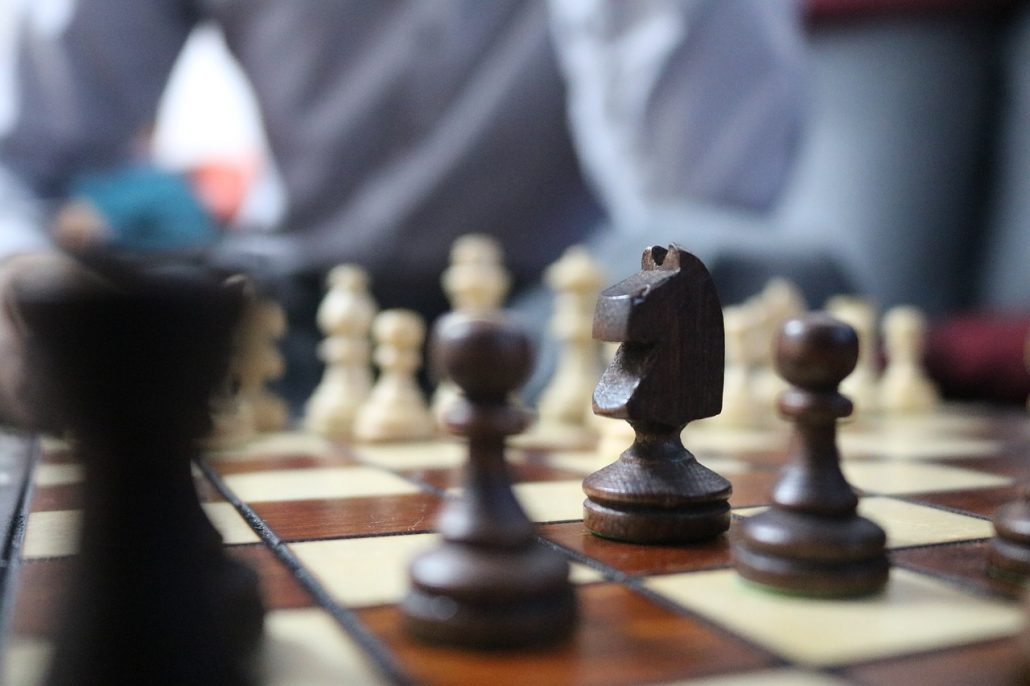Table of Contents
The chess bishop pair
The bishop pair in chess is an important factor that represents an advantage, is also one of the rarest chess concepts seen. We have it as “rare” because although the material is equal, in a position with the bishop pair, you can feel the misbalance.
Having two bishops instead of two knights is a real advantage in chess, but it also depends on the position. Having two knights instead of two bishops can also be an advantage if we have the right position.
As with almost every chess concept, we can sense the relativity of this matter now, and that’s why is important. Every chess player needs to know how to seize the c bishop pair as any other advantage on the board.
This type of advantage is mostly overlooked by the majority of chess amateurs. If not, usually they don’t know how to convert this advantage.
Here we will see, the theory around the bishop pair, and how to seize its power, ways to understand how to use them correctly.
The difference between the bishop and the knight

Here is a question that many chess players have done themselves over the years. The bishop and the knight are two minor pieces, which means they have the same numerical value.
It’s known that the worth of a chess minor piece is equal to three pawns approximately. But the worth of the pieces always depends on the function they have on the position.
This is why there is no clear response to this question because everything will always depend on a lot of factors, that could or could not be present.
In closed positions, it’s known that a knight can do a better job than the bishop usually. While the bishop pair works better in open positions where it can control a lot of squares and show its strength.
However, there is an important factor we have to consider, which is the only real character that we can use to state a difference:
The bishop controls more squares than the knight
This is why we could say that yes; the bishop actually is superior to the knight. However, as everything in chess, is relative, because this will depend on the position.
The bishop may be completely useless if the pawn structure doesn’t favor its color.
The double bishop sacrifice (Lasker’s sacrifice)

There is a special tactical combination which became very famous because of its nature, which is pretty impressive actually. Nowadays is a pretty known chess tactical pattern that will be recognized by many by looking at the following position:
The larker’s sacrifice is a double sacrifice actually; in which we give out two bishops to destroy the king’s lair. It’s usually combined with the presence of a rook in an open file to checkmate the king and, of course, the queen.
The combination starts with the first bishop sacrificing on h7 and then the other one on g7. This way the king is completely exposed, and normally leaves the attacking side with a decisive advantage.
This is a pretty common sacrifice, and I can say it’s pretty satisfactory to play it against your opponents. Let’s see the original combination, the game that gave birth to this combination.
15. Bxh7+!! Kxh7 16. Qxh5+ Kg8 17. Bxg7! Kxg7 18.Qg4 Kh7 19. Rf3 This sentences the game.
Here we see a beautiful combination by the genius Lasker, this is positional with great positional and tactical enrichment for beginners.
I suggest you analyze the whole game here, if you have never done it before, it shows great usage of the bishop pair in the middle game.
The bishop pair domination in the middle game

The bishop pair can do its best in the middle game, where it will serve as a way to restrict your opponent severely. The objective of the bishop pair is to leave no options to your enemy and restrict it.
You must never allow your opponent to exchange one of the bishops, otherwise, the pressure will descend. You don’t want to exchange one of the bishops, not even for a rook in some cases.
Try to take the biggest number of squares with the bishops progressively in the game. Also, a good way to seize the bishop pair is to advance the pawns supported by the bishop pair.
This is a good way to take more and more space and tie up your opponent. Once you achieved this you can move onto the attacking part, and again, two bishops are excellent at the job.
We could say you have three main objectives in positions with the bishop pair in the middle-game:
- Advance your pawns to take space from your opponent until he is positionally restricted
- Prevent the opponent to win any counterplay, control squares, or regain central presence with his pieces
- Rearrange your pieces again to attack while conserving your space and create misbalance in your favor
Simplification with the chess bishop pair

Another good option to seize the bishop pair is to simplify the game when you have the advantage. One must never fall in love with the advantage, in the right moment you will have to let go of one of the bishops, but when you know is worth it.
For example, you can exchange one of the bishops if you know that your advanced pawns will be enough to win the game. There are also going to be positioned in which is going to be unavoidable, that is why you have to act quickly with the bishop pair.
You can also use the pair of bishops to prepare the decisive penetration of your king into the enemy position. The position of the king is very important in the endgame for simplification.
If your king can approach the enemy awns while you are restricting the enemy king to get near your pawns, it counts as a great advantage. The simplification will always depend on a lot of factors, but talking about pair of bishops here is the main idea:
The pair of bishops is meant to buy you time.
You may also like:
Bishop Chess Piece Interesting History
Bishop Chess Killer Strategy to Win Games like a Grandmaster
7 Things to Consider Before You Let Your Child Play Chess Online






